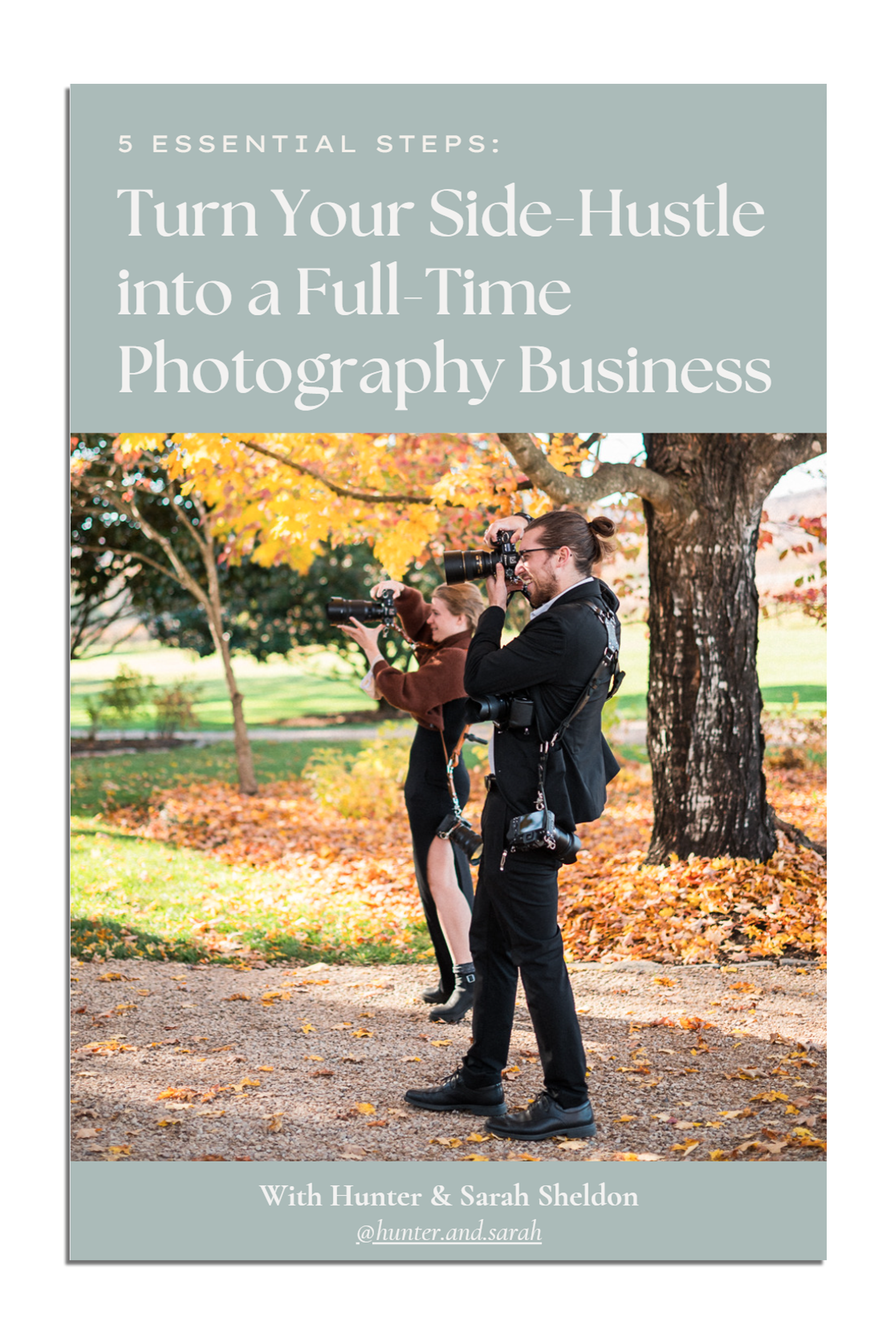VIEW BY CATEGORY:
Hi, we're Hunter and Sarah, a husband-and-wife, luxury wedding photography team. We’re also educators, helping other photographers build profitable and sustainable photography businesses.
MEET US
LOOKING FOR SOMETHING?
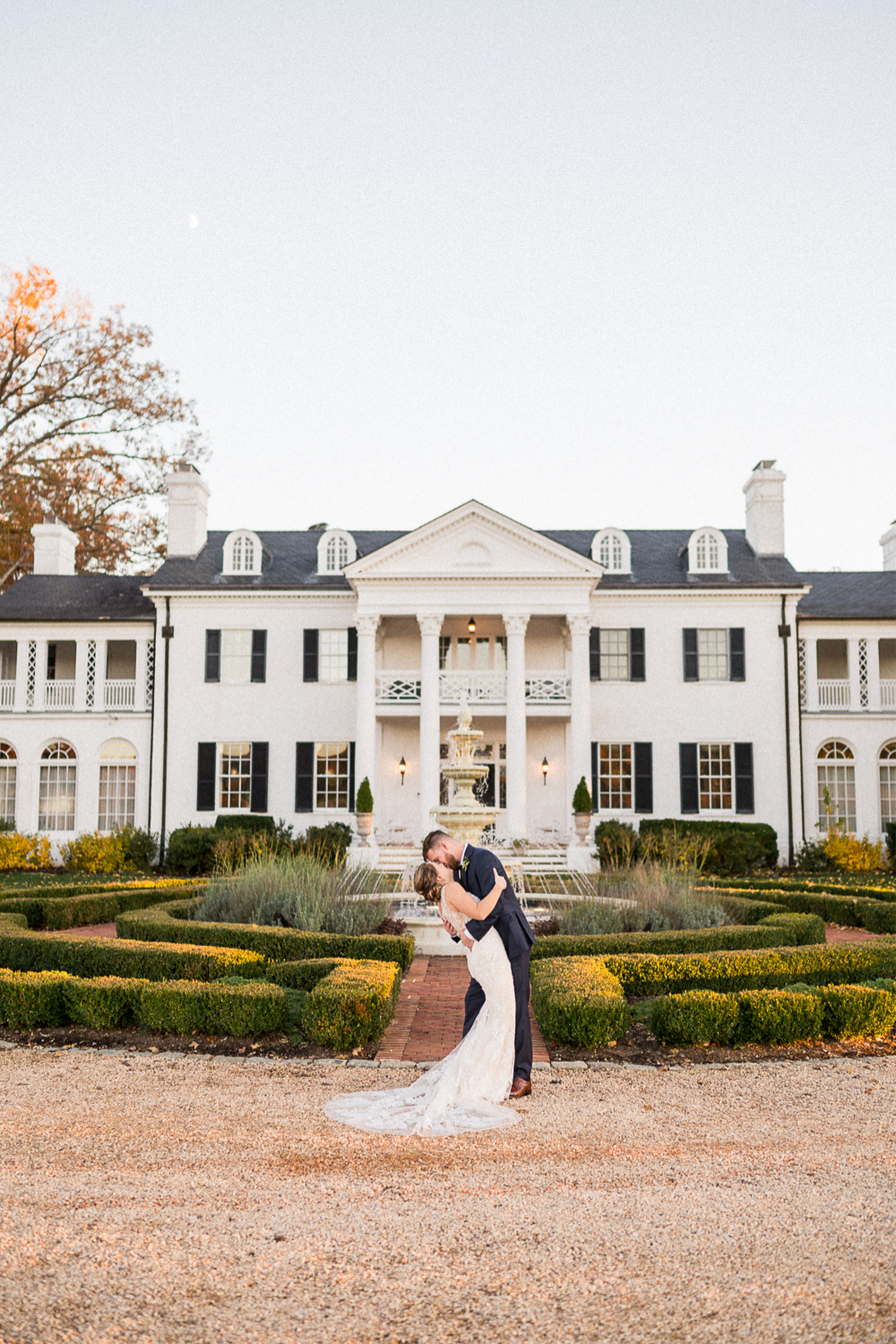
Camera Bag Essentials 2: Wide Angle Lenses, 35mm vs 24-70mm vs 14-24mm
January 26, 2022
—
Last week, we continued our Camera Bag Essentials blog series with a discussion on the best prime lens. This week, we’re continuing with the next piece of glass that Hunter and I purchased in the early days of our wedding photography side-hustle: a wide-angle lens.
But between the 35 mm prime, the 24-70 mm f/2.8 zoom, and the ultra-wide 14-24 mm f/2.8 zoom, which one is right for you and your business? Read on and find out!
Why Buy A Wide Angle Lens at All?
Even if you just shoot portraits, you’ll find pretty quickly that only owning a 50 mm or an 85 mm prime lens can be somewhat limiting. Sometimes you want to really capture the context that your subjects are in, going for a wide portrait shot.
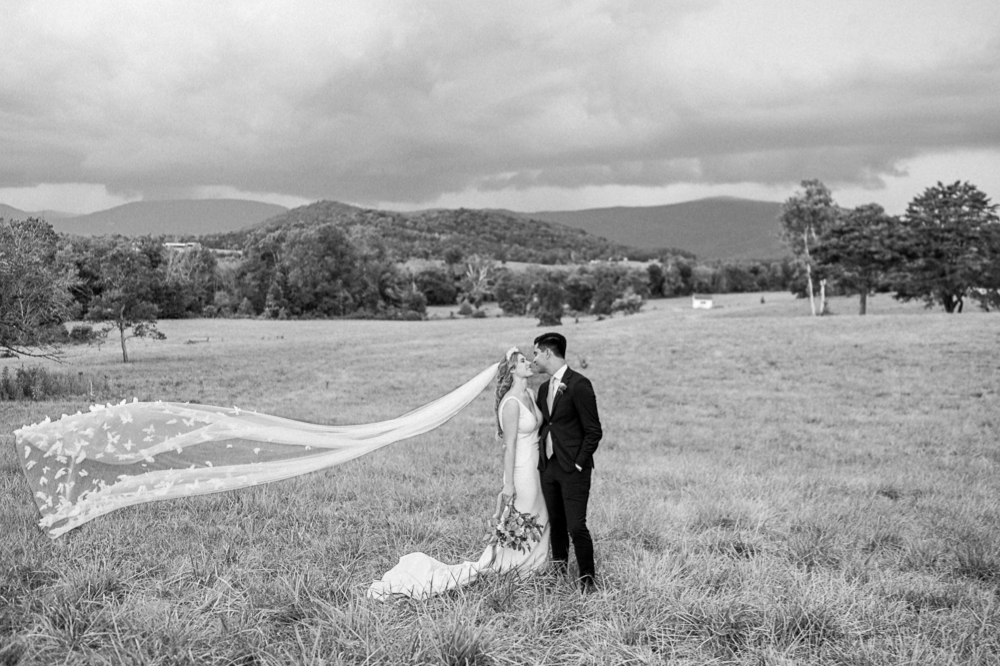
But especially if you want to shoot weddings, there are a ton of situations where you’ll need a wider lens. From the getting ready suite to the ceremony, and for all sorts of large group portraits!
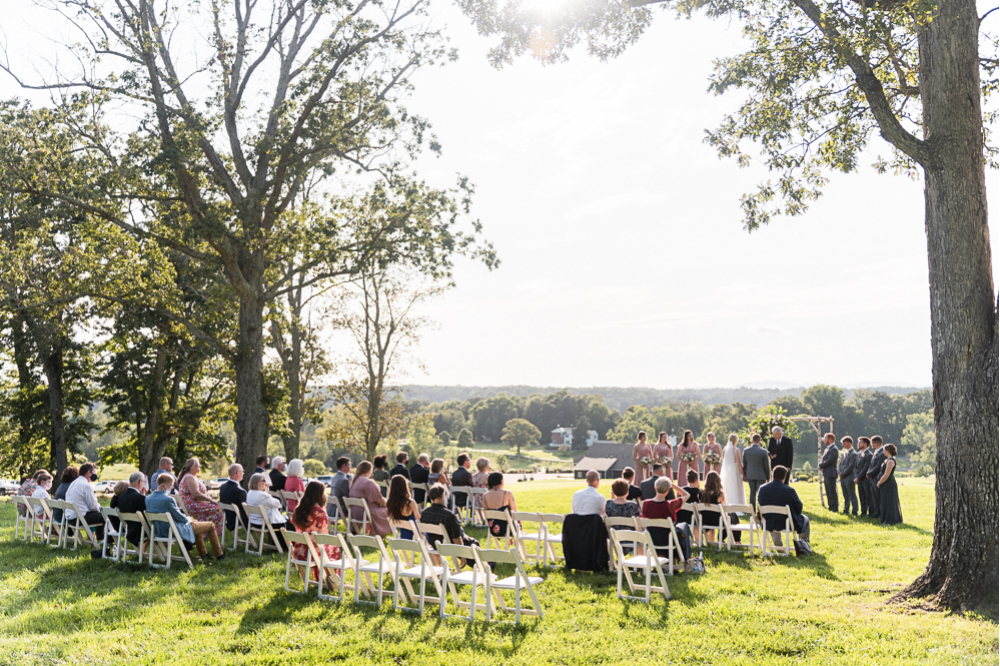
So, Which Wide/Medium Angle Zoom Lens Should I Buy?
The Wide-Angle Portrait Lens: 35 mm f/1.8
We’ll start with the 35 mm prime lens, since it’s the least expensive lens out of the three. If you read our blog last week, you know that we don’t necessarily recommend a 35 mm as your first and only prime lens. However, if you just want a wider angle for portrait work, it’s a great option!
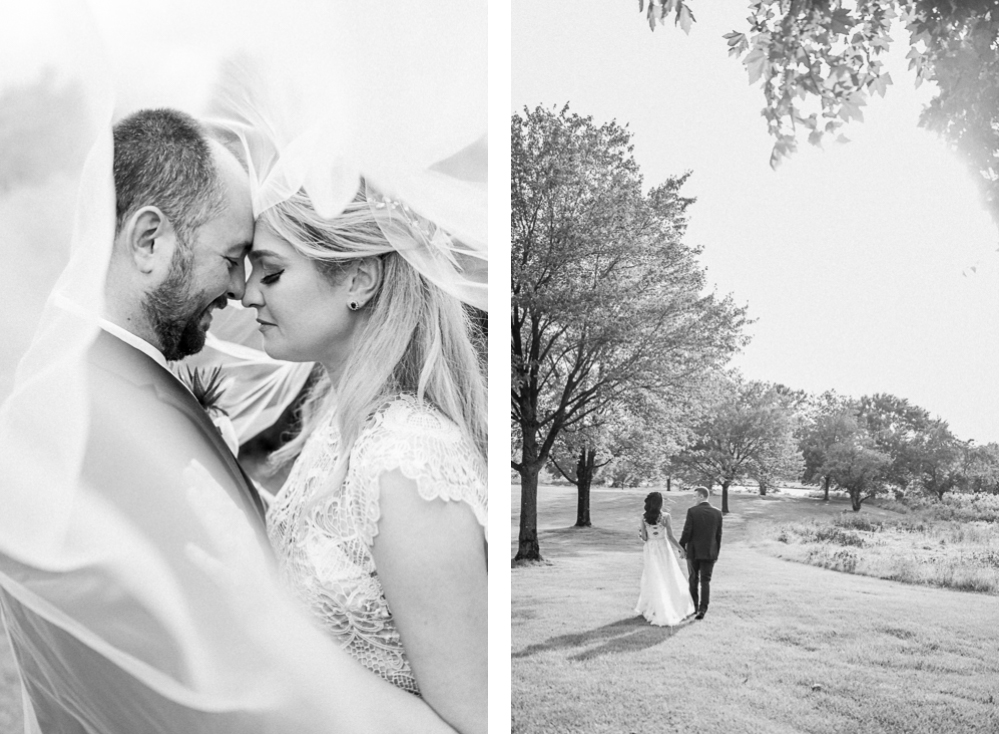
Whether shooting tight shots or far away shots, the wide-angle view of the 35 mm lens makes for some wonderful portraits!
Another area where Hunter LOVES his 35 mm lens is during dancing photos! He really loves to get right up in the thick of the dance floor for dancing photos, so the lightweight and fast-focusing 35 mm prime lens is perfect for both close-up dancing photos, and wider ones!
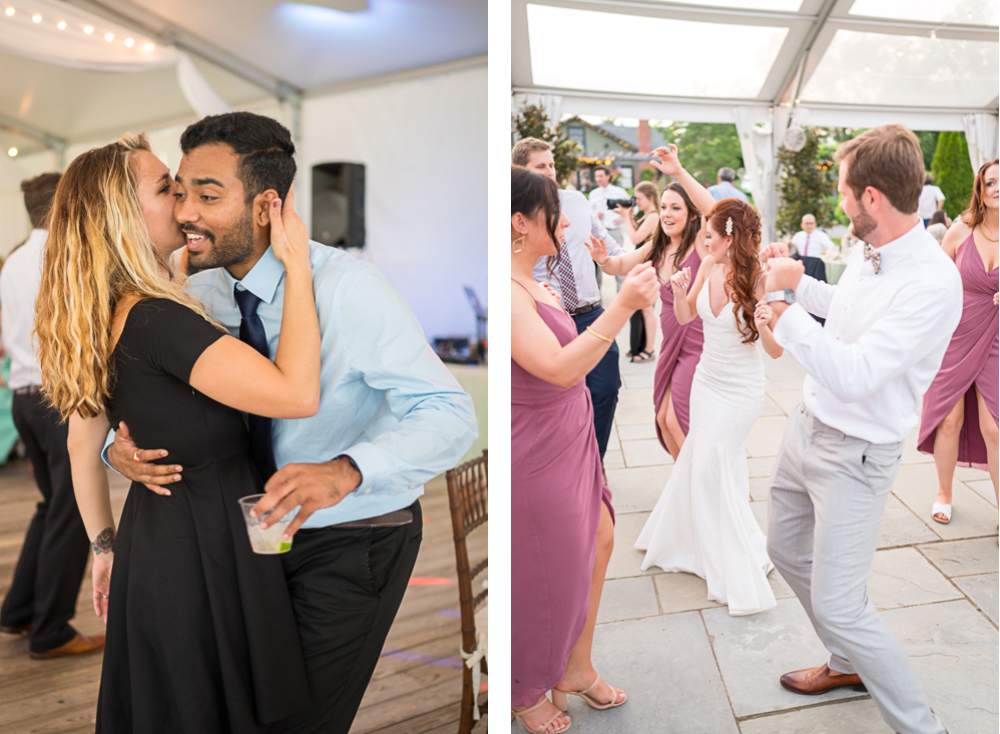
For reference, the Z-mount 35 mm f/1.8 weighs about 13 oz, almost half the weight of the Z-mount 24-70 f/2.8, which weighs 24 oz! That difference REALLY ads up around the second hour of capturing dancing photos!
Why the 35 mm Might NOT Be Your NEXT Purchase…
However, if you’re going to be shooting weddings and so far only own a prime lens, like the 50 mm or 85 mm, we don’t think that a 35 mm should be your next purchase. And no, we promise we don’t hate the 35 mm, we’re just pragmatists 😂
Why do we think that? Well, it all comes down to the fixed focal length. Because the 35 mm can’t zoom, it’s definitely possible to find yourself in a situation where your back is literally against the wall, you can’t back up any more, but you still can’t fit your subjects in the frame. Sometimes, it just isn’t wide enough.
Another thing to think about with any wide angle lens, is the lens distortion that happens around the edges of the frame. If you put anyone or anything in the 15% of the frame closest to the edge, they can start to look like you took their photo in a fun-house mirror. And because the 35 mm just isn’t very wide, it’s more likely that you find yourself in a situation where you end up putting your subjects too close to the edge.
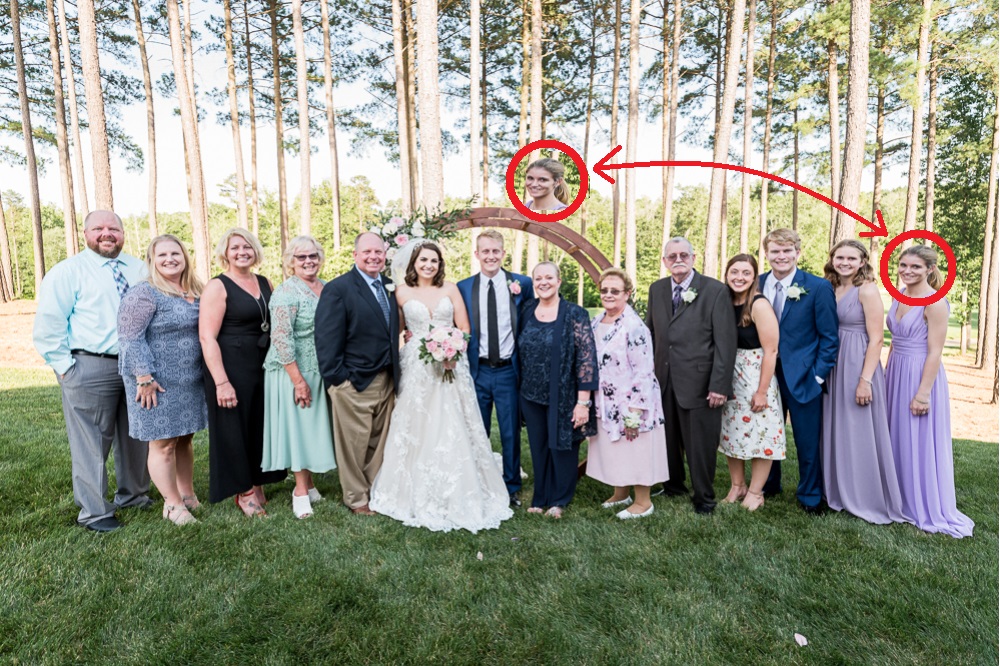
Check out the bridesmaid on the outermost right edge of this family photo. See how the size and shape of her head is so distorted, when compared to someone in the center of the photo? Thankfully we noticed this in-camera, so we could switch to a wider lens and get a bit more breathing room on the edges of this image.
The Generalist Lens: 24- 70 mm f/2.8
The lens that we would recommend as the second purchase for any aspiring wedding photographer would be the 24-70 mm f/2.8 (or the f/4.0 if you can’t possibly save up for the f/2.8 before your first few weddings). There’s a reason that a 24-70 is an absolutely standard of most professional photographer’s camera bags. It’s incredibly versatile!
For starters, the extra coverage you get between 35 mm and 24 mm might not seem like much, but can make all the difference in the world when shooting in tight indoor spaces!
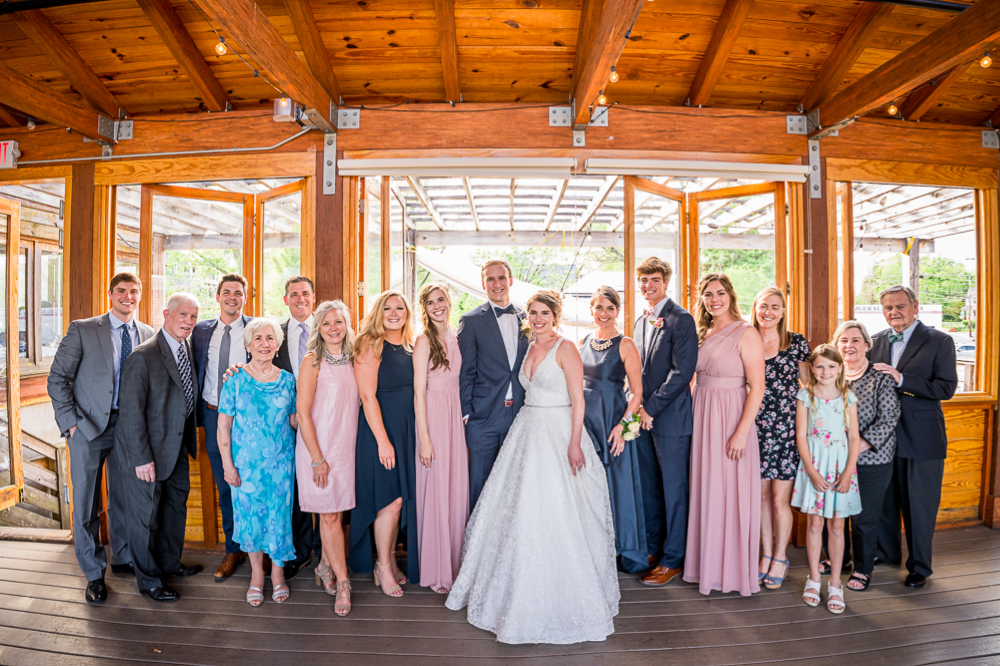
Also, the ability to zoom in and out quickly and without moving our feet is essential during certain parts of the day (like when the wedding party is walking down the aisle) and convenient during almost all of the day (like switching from large group family photos to tighter, smaller-group photos).
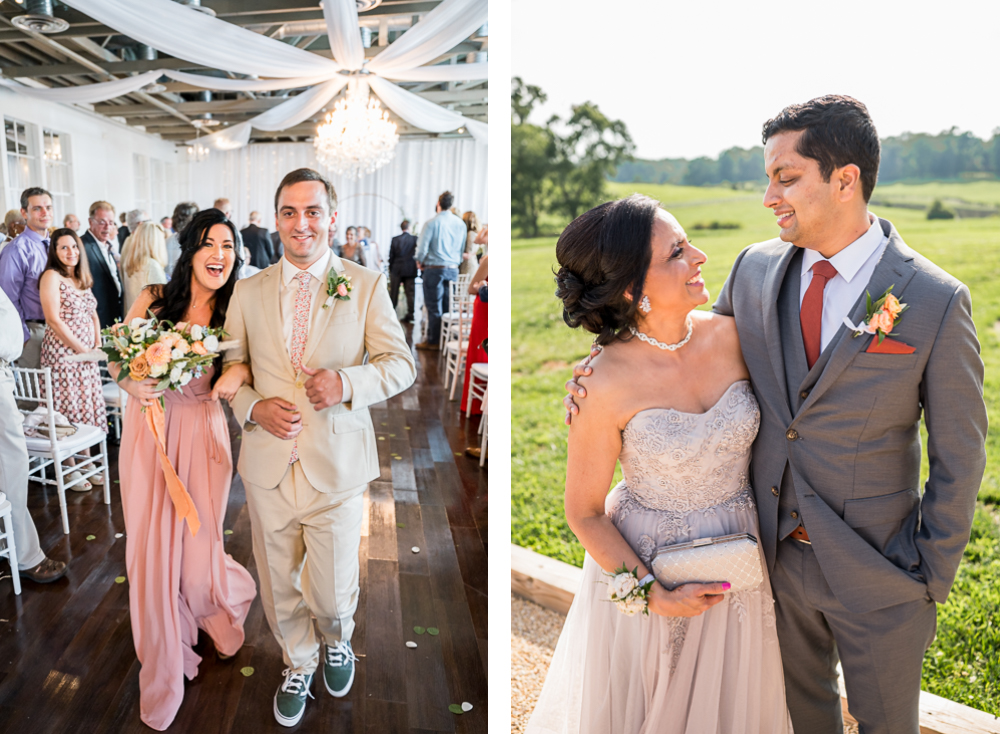
Plus, on top of these two important advantages, you can still use it just as effectively for wide-angle portraits, flat-lay details, large wedding parties, dancing photos, and family portraits. And as you shoot these things, you’re less likely to get the wide-angle lens distortion we talked about with the 35 mm, since you have the ability to zoom further out, and are therefore less likely to be forced to put your subject in the edge of the frame.
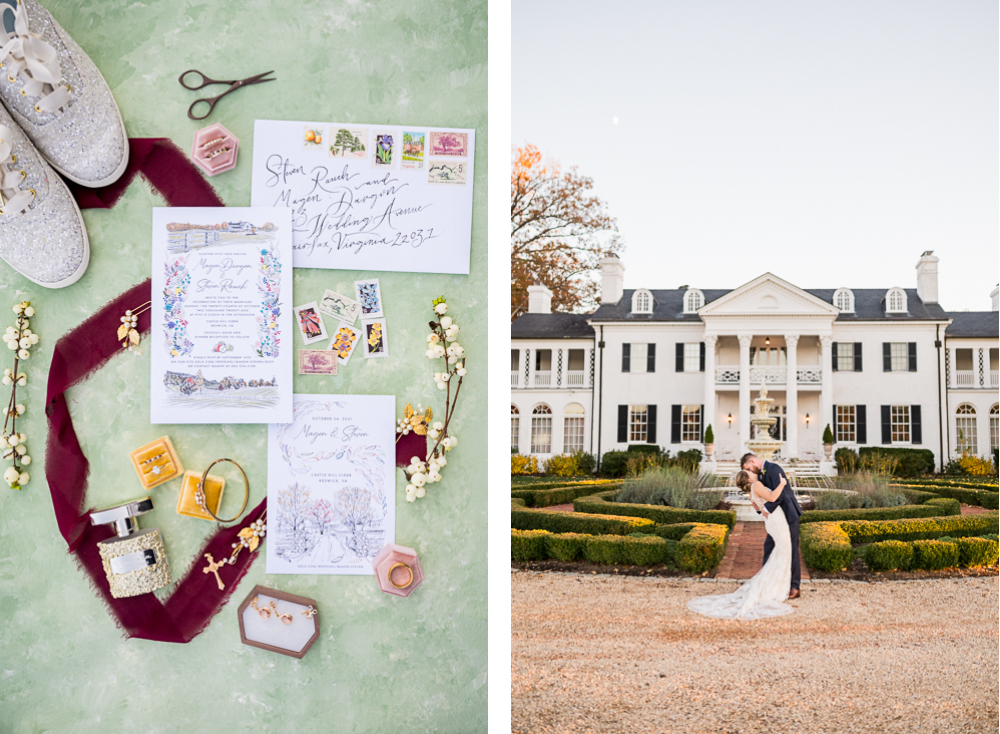
The 24-70: NOT Your Average Kit Lens
Something you might be wondering at this point is, “What about the zoom lens that my camera came with? That’s a wide angle zoom, isn’t it?” And while you’d be technically correct, that “kit lens”, or the lens your camera came with, isn’t a professional lens, and has a variable, more closed-down aperture.
So if you’re zoomed all the way out, it’s likely at f/3.5, and if you’re zoomed in, it’s at f/5.6. Compare that to a high-end 24-70 mm which will stay at f/2.8 whether you’re zoomed in or out. And like we mentioned last week, lower aperture numbers give you blurry backgrounds and allow your subjects to pop, and they’re also helpful in low-light situations!
However, we also understand that forking over $2,000+ for a new 24-70 mm f/2.8 isn’t possible for many newer photographers. If that’s you, but you still want your hands on this nice lens, you have 3 options: you can settle for a less-professional (but still nicer than your kit lens) zoom lens, like the 24-70 mm f/4.0, which will run you less than half of it’s f/2.8 counterpart.
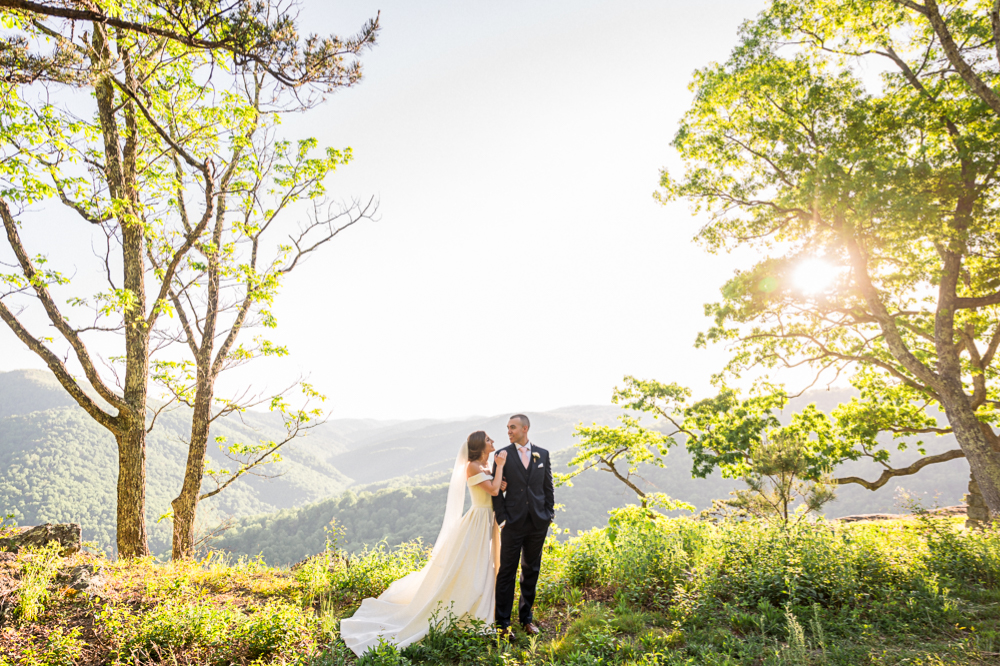
For outdoor portraits like this one, you may not notice that much of a difference between f/4.0 and f/2.8.
Another option would be to find a used lens in great shape and save some money there. Finally, you could do some research, and go for a third-party lens like Tamron. A word of caution here though: you often “get what you pay for” when it comes to lenses. So if you’re getting a $2,300 lens for only $500, there’s probably a reason.
When we were first getting started, we purchased all of our zoom lenses from Tamron. We had done some research and found that — at the time — the Tamron 24-70 mm (as well as the 70-200 mm, more on that next week) were about 90% as good as their Nikon equivalents for around half the cost. So we thought that that made the most sense for our business at the time!
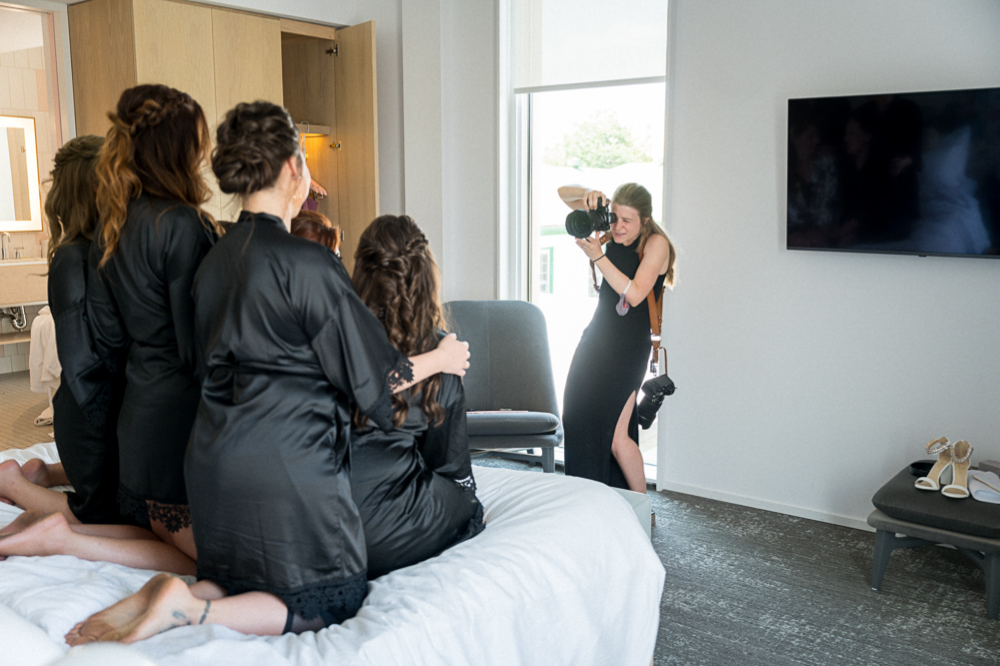
A 50 mm lens just would NOT have gotten the job done in this tight hotel room!
The 14-24 mm f/2.8: The ULTRA-Wide Angle
Now, the last lens we want to talk about when discussing wide-angle lenses is an ultra-wide lens. We own Nikon’s Z-mount 14-24 mm f/2.8 lens, but there are several different iterations of the professional ultra-wide lens. Before we switched to mirrorless, we owned a cheaper, variable aperture Tamron 17-35 mm. It got the job done, but we were frustrated that — because of the variable aperture — our settings would change as we zoomed in and out.
This lens is definitely not a “must-have” lens, but when DO you have the budget to afford a nice ultra-wide, it will save you in the rare extremely tight spaces. There’s a high-end wedding venue here in Charlottesville that is absolutely gorgeous in many respects, but the getting ready suite that they give to couples who book with them is absolutely tiny.
So in these rare cases, I’ll break out the 14-24, and capture a photo like the one below on the left. There’s just no way to get an image like this in this space with anything other than an ultra-wide! Of course, I’m also shooting with my 50 mm prime during these times, capturing images like this one on the right, but it’s nice to have an option that can still provide more context for that specific moment in the day.
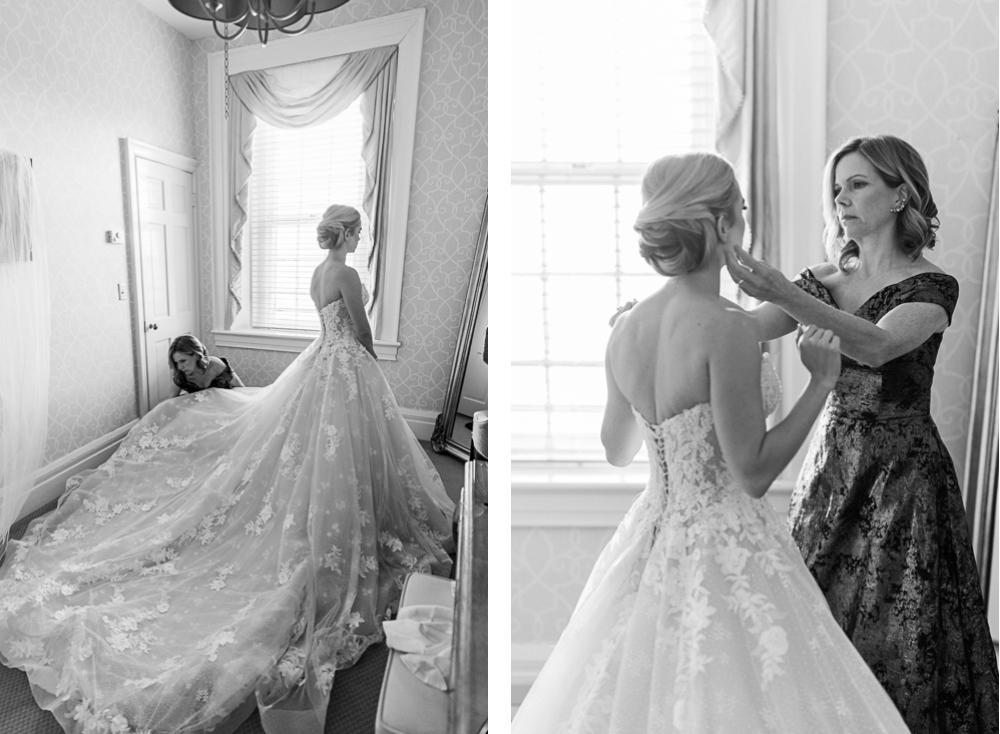
Although the image on the right is also beautiful, the image on the left is SO different, and wouldn’t have been possible without a lens that can go as wide as 20 mm!
To Sum it All Up…
So, in summary, all three of these lenses are great, but are best in different situations.
- If you just want a wider perspective during portraits, or a lightweight prime lens to shoot wide dancing photos, the 35 mm f/1.8 is a great addition to your camera bag.
- If you want an all-around wedding day generalist lens that can shoot everything from portraits to details, from ceremony photos to wedding party portraits, the 24-70 mm f/2.8 is absolutely worth the investment.
- And if you already have one or both of the lenses above, and find yourself restricted by shooting in really right spaces sometimes, it might be worth considering an ultra-wide lens like the 14-24 mm f/2.8.
Want More?
Click HERE to get your free copy of our eBook: “5 Essential Tips for Turning your Side-Hustle into a Full-Time Photography Business.” You’ll also be subscribed to our newsletter, so our newest content, weekly encouragement, and exclusive offers will be delivered right to your inbox!
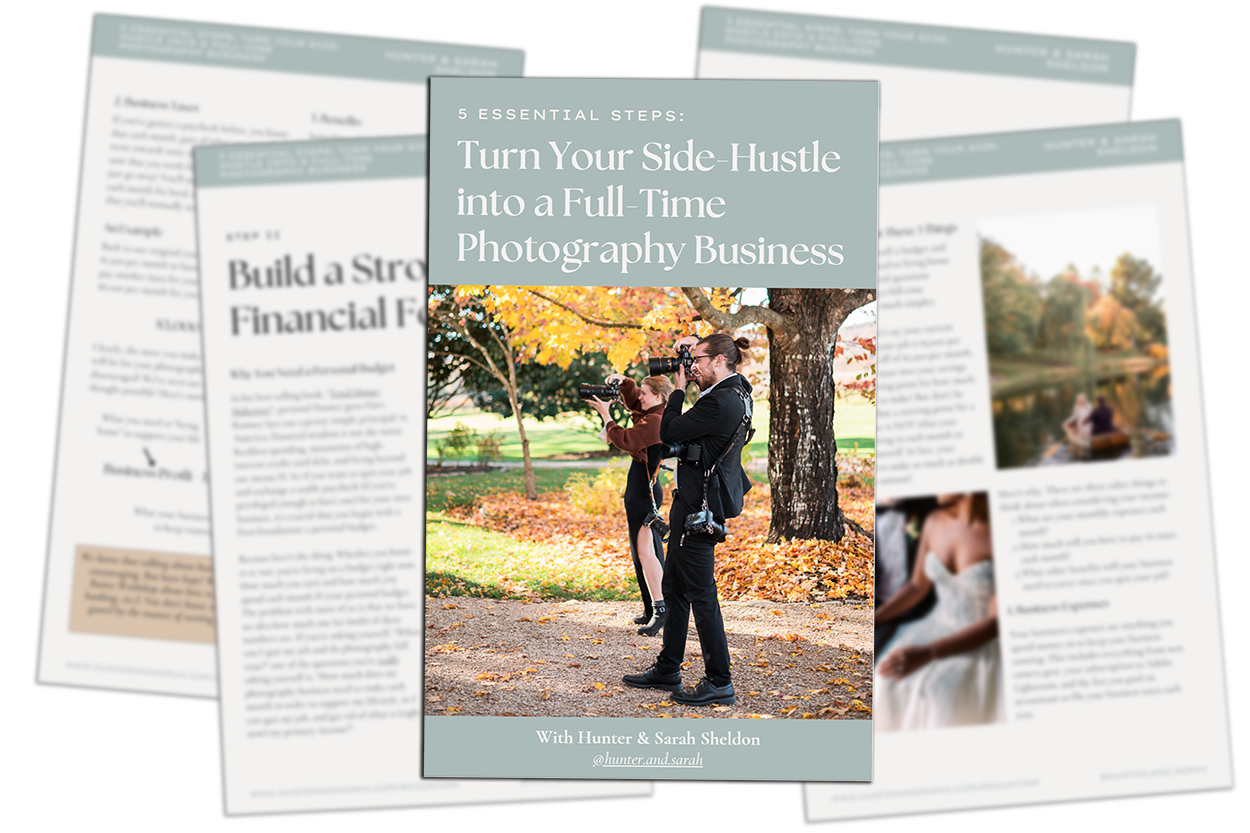
—
Shopping List!
If you’re planning to purchase anything that we talked about today and we helped you make your decision, it would mean SO much to us if you purchased it through the links below! You’ll pay the same price as you normally would on Amazon, but Amazon would share a small slice of the profit with us. You’ll get what you need, support a small local business (us), and show us that our advice really has been helpful! Thanks! [Prices shown as of date of publishing, and are just for comparison/reference]
For Mirrorless Z Cameras:
- Nikon Z 35 mm f/1.8 S [$850]
- Nikon Z 24-70 mm f/2.8 S [$2,300]
- Nikon Z 24-70 mm f/4.0 S [$1,000]
- Nikon Z 14-24 mm f/2.8 S [$2,400]
For DSLR Cameras:
- Nikon F-mount 35 mm f/1.8 [$525]
- Nikon F-Mount 24-70 mm f/2.8E ED [$2,100]
- Tamron F-Mount 24-70 mm f/2.8 G2 for Nikon [$1,200]
- Nikon F-Mount 14-24 mm f/2.8 [$1,800]
—
Check out the rest of the series below!
-
- Camera Bag Essentials 0: DSLR vs Mirrorless: Nikon D750 vs Z6 vs Z6ii
- Camera Bag Essentials 1: Prime Lenses: 85mm vs 50mm vs 35mm
- Camera Bag Essentials 2: Wide Angle Lenses: 35mm vs 24-70mm vs 14-24mm
- Camera Bag Essentials 3: Four Reasons to Buy a Telephoto Zoom Lens: The 70-200mm f/2.8
- Camera Bag Essentials 4: How to Up Your Detail-Photo Game with a Macro Lens
- Camera Bag Essentials 5: Using Reflectors and Flashes as a Natural Light Wedding Photographer
- Camera Bag Essentials 6: Why We Used Off-Camera Flash as Wedding Photographers… But Don’t Anymore
- Camera Bag Essentials 7: How to Know When It’s Time to Upgrade Your Camera Body
- Camera Bag Essentials 8: How to Know When You’re Ready for a New Prime Lens
- Camera Bag Essentials 9: Everything You Need to Know to Protect Your Camera Gear
- Camera Bag Essentials 10: 10 Wedding Photography Accessories You Didn’t Know You Needed
Filed in:
Wedding Photography & Photography Education
Charlottesville, Virginia and Beyond
HOME
ABOUT US
WEDDINGS
JOURNAL
FOR PHOTOGRAPHERS
PRESS & PRAISE
BLOG
CONTACT
e. hunter@hunterandsarahphotography.com
p. (434) 260-0902
